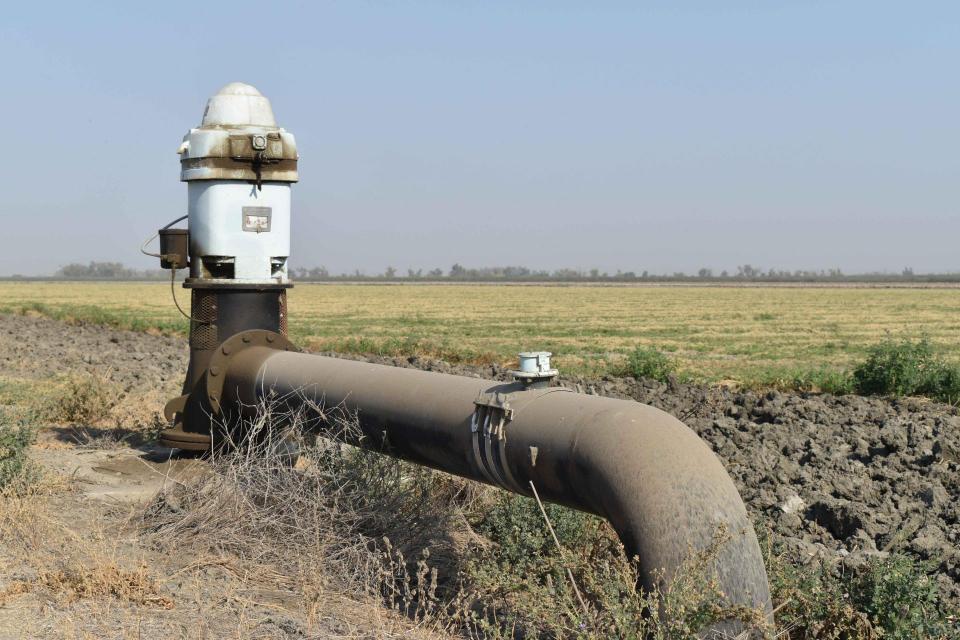Explainer: The Sustainable Groundwater Management Act: The Law, The Judge And The Enforcer
The Resource
 Groundwater provides about 40
percent of the water in California for urban, rural and
agricultural needs in typical years, and as much as 60 percent in
dry years when surface water supplies are low. But in many areas
of the state, groundwater is being extracted faster than it can
be replenished through natural or artificial means. That
groundwater overdraft has been especially critical in the San
Joaquin Valley, where land has subsided and damaged canals and
aqueducts, and where shallow wells (including household wells)
have gone dry.
Groundwater provides about 40
percent of the water in California for urban, rural and
agricultural needs in typical years, and as much as 60 percent in
dry years when surface water supplies are low. But in many areas
of the state, groundwater is being extracted faster than it can
be replenished through natural or artificial means. That
groundwater overdraft has been especially critical in the San
Joaquin Valley, where land has subsided and damaged canals and
aqueducts, and where shallow wells (including household wells)
have gone dry.
The Law
In 2014, amid a deep drought, the state Legislature adopted the Sustainable Groundwater Management Act (SGMA), making California the last Western state to regulate groundwater. Under SGMA, high- and medium-priority groundwater basins must establish local Groundwater Sustainability Agencies (GSA) to manage the basins or submit an alternative plan that meets the goals of the law. Those agencies must adopt plans that halt overdraft and bring groundwater basins into balanced levels of pumping and recharge. For critically overdrafted basins, balance must be achieved by 2040. For high- and medium-priority basins, 2042 is the deadline.
READ THE MAIN STORY: In the Heart of the San Joaquin Valley, Two Groundwater Sustainability Agencies Try to Find Their Balance
Undesirable Results
SGMA singles out six “undesirable results” to be avoided:
- Chronic lowering of groundwater levels indicating a significant and unreasonable depletion of supply.
- Significant and unreasonable reduction of groundwater storage.
- Significant and unreasonable seawater intrusion.
- Significant and unreasonable degradation of water quality.
- Significant and unreasonable land subsidence.
- Groundwater-related surface water depletions that have significant and unreasonable adverse impacts on beneficial uses of surface water.
The Enforcers
The California Department of Water Resources (DWR) approves groundwater sustainability plans (with or without corrections) or declares them incomplete. This places DWR in the dual role of providing regulatory feedback to local agencies in addition to its history of providing technical, planning and financial assistance. (Over the last several years, DWR has provided $180 million to local agencies to support development and implementation of the plans.)
“It’s both of those components that we are really focused on because they are so intertwined and necessary for the overall success of SGMA in our minds,” said Steven Springhorn, acting deputy director of DWR’s Sustainable Groundwater Management Office.
SGMA makes it clear that DWR is the judge of whether plans have measured up and the State Water Resources Control Board is the enforcer.
If DWR rejects a plan, the State Water Board can decide whether a probationary period is needed to get an area back on track. That process is deliberative, and the State Water Board has flexibility regarding who is subject to probation, said Natalie Stork, chief of the State Water Board’s groundwater management program. SGMA provides GSAs the chance to come up with solutions.
“Our two agencies have to work together to implement SGMA,” said Stork. “Our role is to support DWR’s review, using our authority and experience.”
Stork acknowledged the challenge of making SGMA work for all water users, including disadvantaged communities.
“It’s complicated,” she said. “The law is clear that GSAs have to consider all of the beneficial uses of water in a basin and domestic wells are one of those beneficial users. There is a balance there that the locals are going to have to figure out.”








